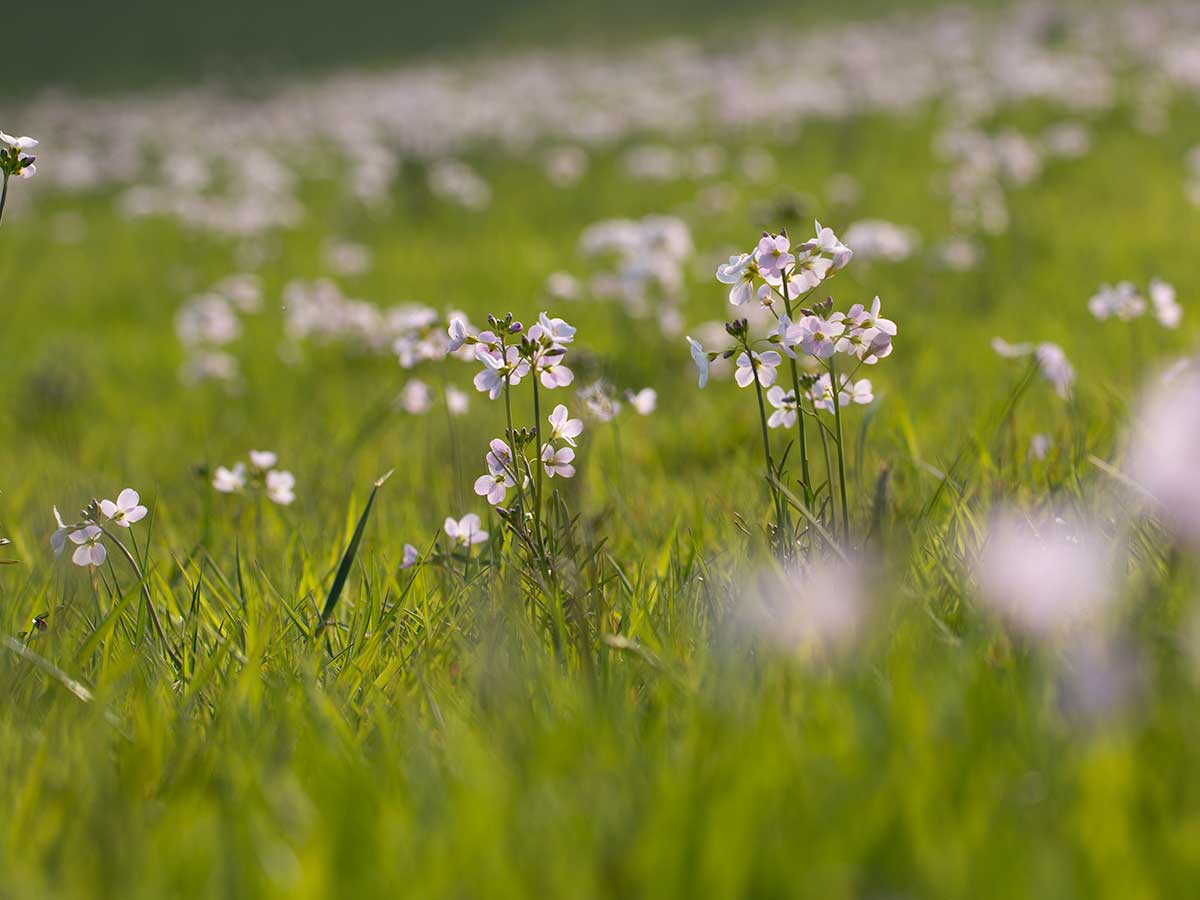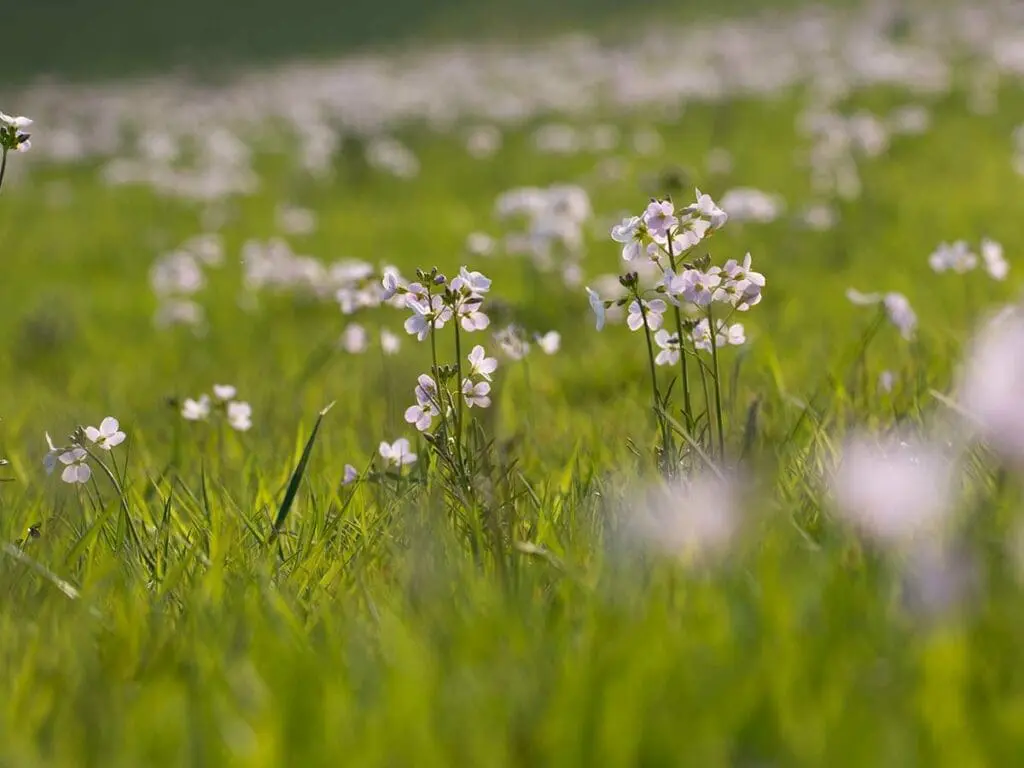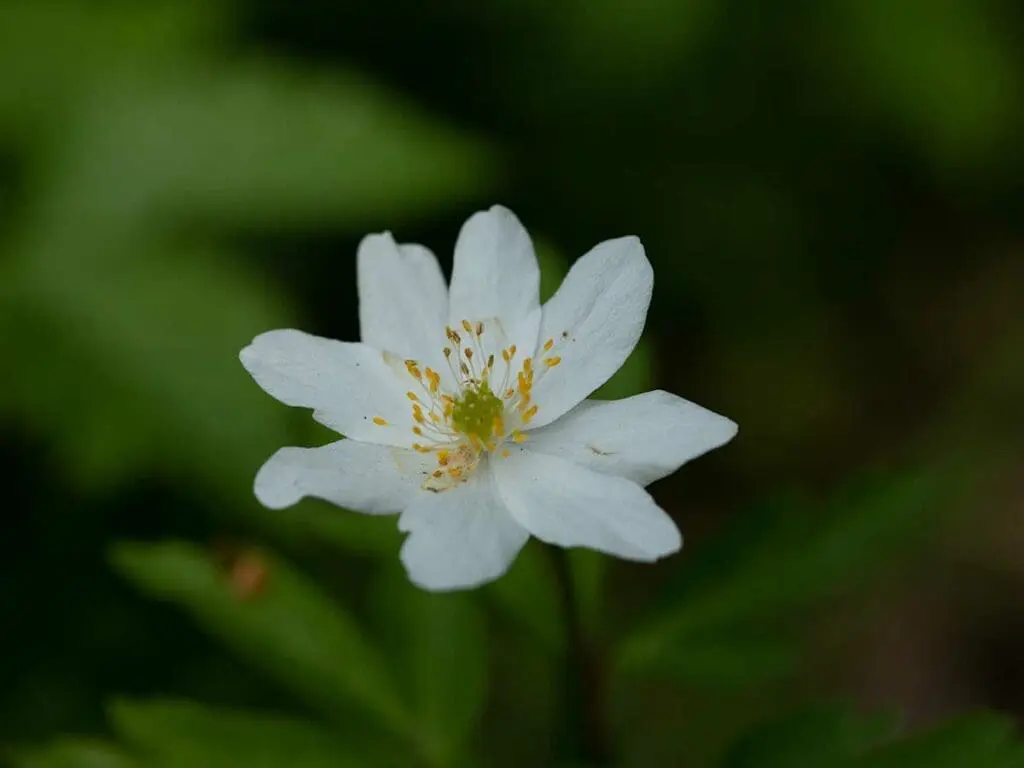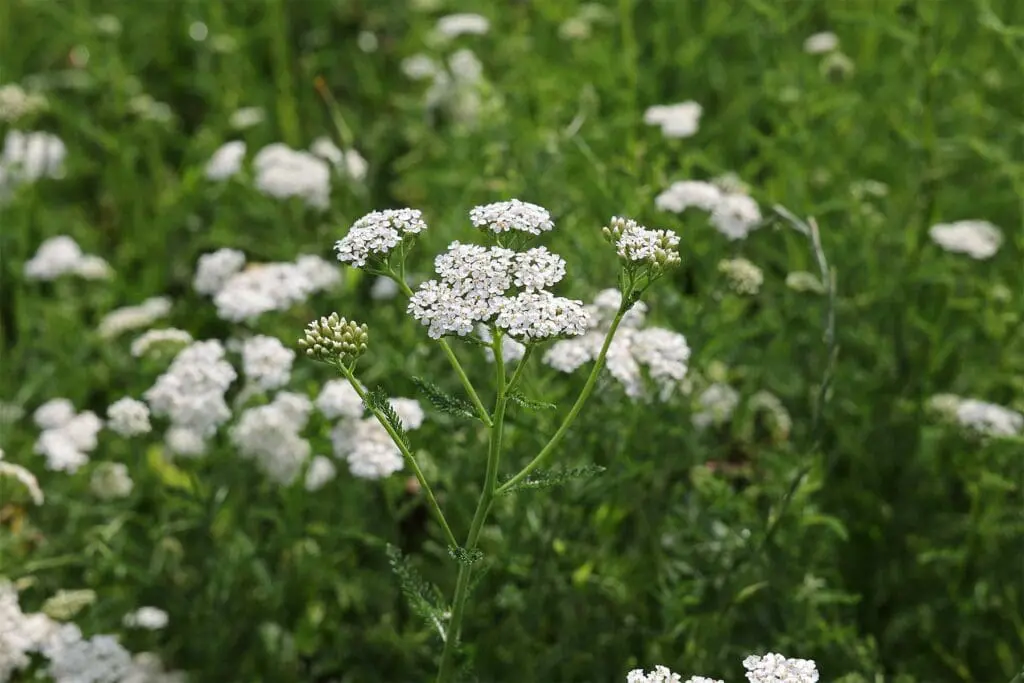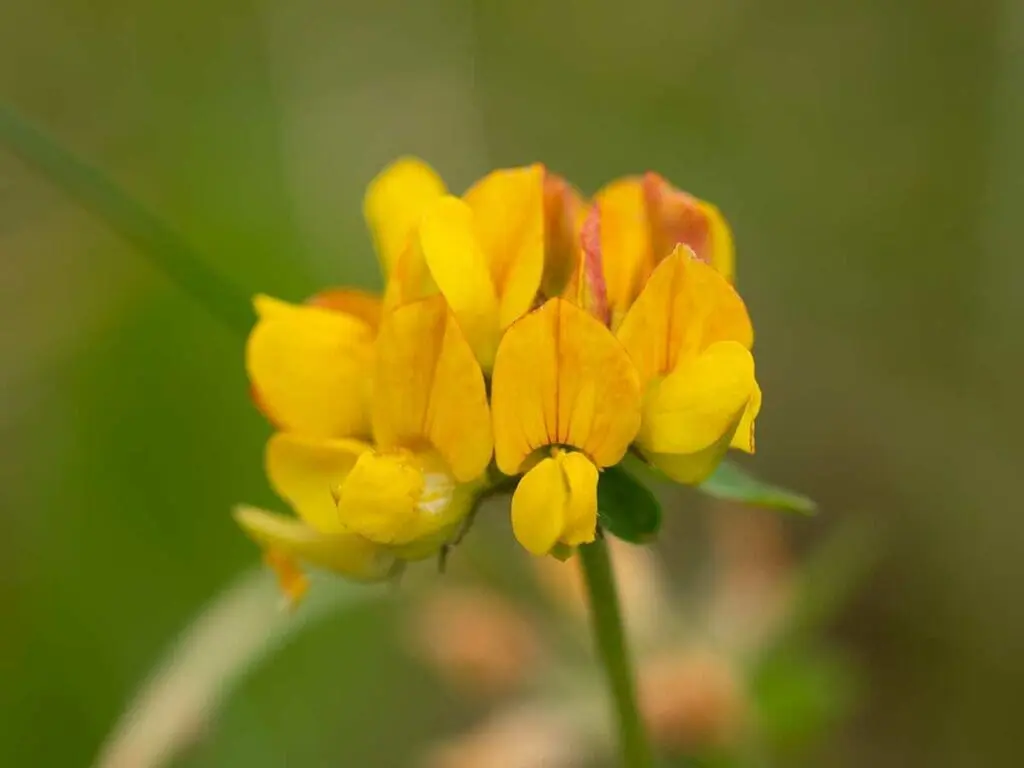- Scientific name: Cardamine pratensis
- Family: Cabbage (Brassicaceae (formerly Cruciferae))
- Found in: Grassland, Wetland
Cuckooflower gets its name because it first appears in April, at the same time as cuckoo.
May and June are the months when cuckooflower is in full bloom and, for this reason, many people call it the Mayflower. It is also known as Lady’s Smock and Milkmaids.
These pretty, pinky-purple and white flowers are often found in wet meadows, stream margins, ditches and pastures where they often form a carpet of blossoms.
Cuckooflower is a native herbaceous perennial plant and although it is not protected or threatened, its range has been reduced due to the drainage of many of our wetlands.
The flowers occur in groups at the end of the flower stalk which droop and close up at night or during heavy rain. The flowers are hermaphrodite and are pollinated by bees, flies, moths and butterflies. It thrives in moist, slightly shady places on most soil types.
The leaves of the flowering plant are used to treat chronic skin complaints and asthma. Amongst other uses it has beneficial digestive and stimulant properties. The leaves of young shoots can be eaten raw or cooked and are rich in vitamins (particularly vitamin C) and minerals. The cuckooflower was at one time a popular spring salad plant and has a pungent cress-like flavour. The flowers are also edible.
Propagation
From seed
Sow seed outdoors in a seedbed in a shady position in April. Plant out in autumn or spring.
By division
As cuckooflower seed is very small and hard to collect, vegetative propagation may be more suitable.
Fill a seed tray with moist compost. Place cuckooflower leaves flat on the surface of the moist compost and ensure that the compost and leaf make good contact.
After three to four days small white roots will appear on the underside of the leaf. After two weeks the leaves have transformed into recognisable plants and should be transplanted into a pot to grow on.
After flowering the cuckooflower loses its leaves quickly so be quick when the plant is in flower (May and June). This also guarantees that you have collected the cuckooflower and not other members of the same family.
Alternatively, the plant produces young plants at the base of its leaflets, when large enough these can be easily separated from the main plant and grown on as individuals or simply divide in spring or autumn.

